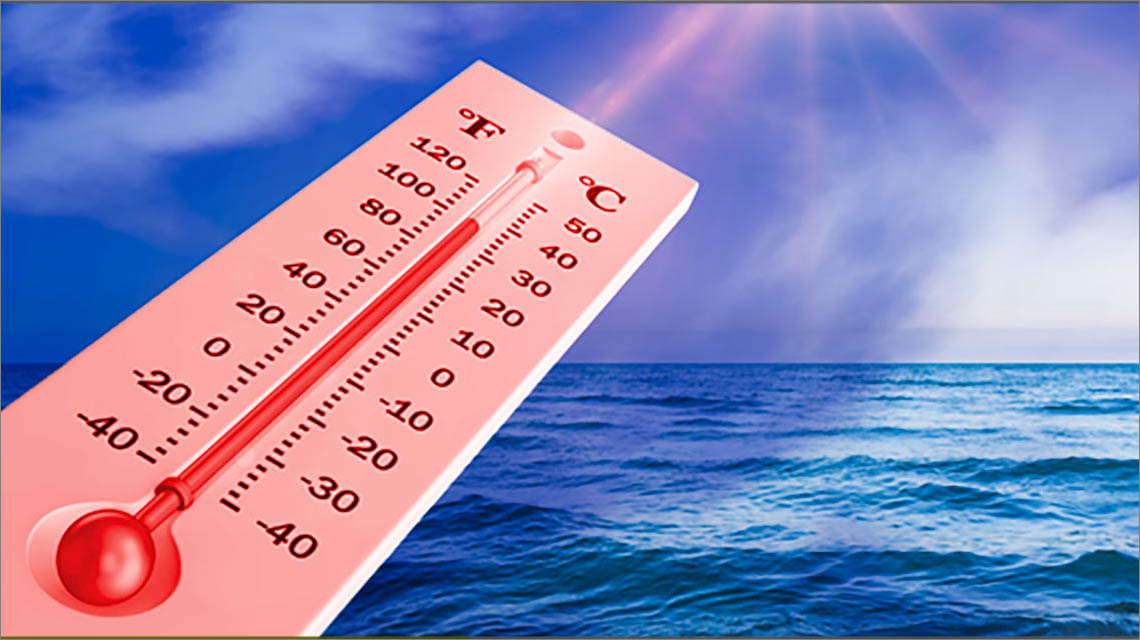Italian National Agency for New Technologies, Energy and Sustainable Economic Development

Environment: Ocean temperatures in 2022 were highest ever recorded, study says
Mediterranean, hot spot of the global crisis, warms up faster than the rest of the planet
A continued record-breaking ocean temperature with increasing in stratification and changes in water salinity pattern give insight into what the future holds amidst a perpetually heating climate.
The Mediterranean is a hot spot of the global crisis, warming up faster than the rest of the planet. The study published in Advances in Atmospheric Science is authored by an international team of 24 researchers from 16 institutions (including Franco Reseghetti at ENEA, the National Agency for New Technologies, Energy and Sustainable Economic Development and Simona Simoncelli at INGV, the National Institute of Geophysics and Volcanology).
Results highlight a new record of 0-2000m ocean heat content (OHC) set and recorded in 2022, with an addition of approximately ~10 Zetta joules (ZJ) of heat into the ocean than 2021. A Zetta joule is a joule (unit to measure “work” or heat”) with 21 zeros behind it.
The study summarizes two international datasets: from the Institute of Atmospheric Physics (IAP) at the Chinese Academy of Sciences (CAS), and from the National Centers for Environmental Information of the National Oceanic and Atmospheric Administration (NOAA), that analyze observations of ocean heat content and their impact dating from the 1950s.
To put this into perspective, a Zetta joule is one order of magnitude less than the energy the sun uses to hit the face of the earth each day. Annually the entire globe consumes around half a zettajoule[1]. It’s hard to grasp even that figure, yet alone 20 times that figure going into the oceans alone over the course of just one year. 10 ZJ of heat is equal to ~100 times world electricity generation in 2021, ~325 times China’ 2021electricity production, ~634 times United States’ 2021 electricity production. 10 ZJ of heat can also boil 700 million 1.5L kettle for every second in the past year.
“Global warming continues and is manifested in record ocean heat, and also in continued extremes of salinity. The latter highlight that salty areas get saltier, and fresh areas get fresher and so there is a continuing increase in intensity of the hydrological cycle” said Lijing Cheng, lead author and researcher for the Chinese Academy of Sciences.
What’s not hard to grasp is how that amount of heat going into the oceans have serious consequences, and actually comes much quicker than one would hope. The increasing saltiness and therefore stratification of the oceans can alter how heat, carbon, and oxygen are exchanged between the ocean and the atmosphere above it. This is a factor that can cause ocean deoxygenation, or loss of oxygen, within the water. Deoxygenation itself is a nightmare for not only marine life and ecosystems but also for humans and our terrestrial ecosystems.
Reducing oceanic diversity and displacing important species can wreak havoc on fishing-dependent communities and their economies, and this can have a ripple effect on the way most people are able to interact with their environment.
Continued tracking of these changes will give scientists an idea of what can be done preemptively to prepare for higher temperatures, extreme weather, and all other consequences that come along with warming oceans and an impacted hydrologic cycle.
As for the Mediterranean, it is confirmed as the basin that warms up fastest among those analyzed in the study, even if its thermal content in 2022 is at the same level as in 2021, according to estimates by the IAP-CAS (Institute of Atmospheric Physics, Chinese Academy of sciences). It should be noted that based on the data of the Mediterranean reanalysis model produced and distributed by the European marine service Copernicus, there is a slight decrease compared to 2021, within a robust growth trend. These differences can be attributed to the different data processing techniques, which in turn have a different spatio-temporal distribution. Short-term (inter-annual) variations are in any case a characteristic part of the system and further investigations are currently underway to verify the adequacy of the results.
“INGV and ENEA are already collaborating within the MACMAP project, funded by INGV and conducted in collaboration with the shipping company Grandi Navi Veloci (GNV), which aims to study climate change through seasonal monitoring of the temperature of the Ligurian and Tyrrhenian seas along the Genoa-Palermo line and to analyze reanalysis data and climate models ranging from 1950 to 2050”, highlights Simona Simoncelli of INGV.
"Being able to collaborate with the researchers of this international team coordinated by Professor Cheng, allows us to keep the attention high on global warming and its impact on the ocean and consequently on man and the economic activities closely related to it, focusing in the Mediterranean area”, adds Franco Reseghetti of ENEA. “We believe that continuing to systematically monitor these changes in the ocean remains the only way to be more aware of their consequences and to be able to contribute to the implementation of effective mitigation and adaptation strategies by providing more and more complete scientific support to decision makers".
